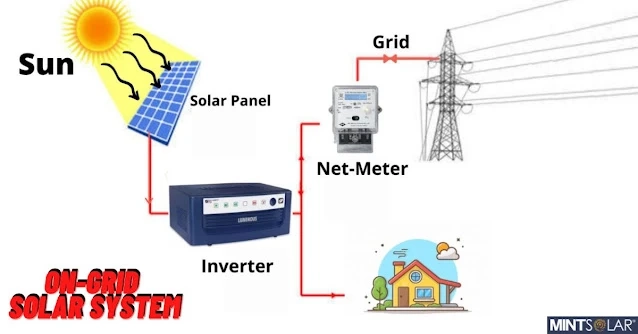With rapid advancements in technology, many people have turned to renewable energy solutions. Wind energy, solar energy, and hydroelectric power have grown tremendously in the last 10 years. Why? Because they are cheap and available in abundance they do not harm the earth’s ecological balance.
According to the Indian Renewable Energy Industry Report, India ranks 5th in wind power, 4th in solar power, and 5th in renewable energy generation.
Solar energy as a renewable resource
India is one of the most attractive markets for renewable energy in the world. Electricity is a major factor that determines economic growth, urbanization, industrialization, and quality of life in a society. Solar power is a more reliable source of energy than wind power or hydroelectric power because you cannot predict them accurately. Therefore, the combined use of renewable sources of energy is preferred as an alternative to other non-renewable sources of energy.
There are three main types of solar energy systems:
On-grid – Also called grid-tie or grid-fed solar systems.Off-grid – Also called stand-alone system.Hybrid – It is a combination of on-grid and off-grid systems. It has solar plus battery storage and provides a grid connection.How does an on-grid solar power system work?
The Solar on grid system is a solar power generation system that is connected to the utility grid. This means that the electricity generated is channelized into the grid. This system can be installed without any hassle, is cost-effective, and is also easy to maintain.
How it works: Solar panels installed in your premises absorb sunlight and convert it into direct current (DC). The solar inverter then converts this DC into Alternating Current (AC), this electricity is then supplied through a grid for daily consumption which in turn powers the electrical appliances used in our homes/offices.
How have on-grid systems been a game-changer in the solar industry?
In the era of rapid advancement in every field, consumers opt for gadgets and devices that are convenient and do not require high maintenance. All solar energy panels work on basic principles and on-grid solar installation is preferred in homes, offices, and commercial buildings.
As a large number of customers are happy to make the switch, solar energy has the potential to offset the carbon footprint in the coming years and help people move towards a greener and cleaner future. Since solar energy is available in abundance, we need to harness its true potential. A variety of systems are in place around the world; however, an on-grid solar power system is widely preferred.
An on-grid solar system comes with many benefits:
Light on pocket and easy to maintain – It is easy to install, set up, and maintain. There is no battery that needs frequent replacement. This makes it an easy maintenance option.
Income generation – When excess power is generated, the consumer can transfer this excess energy back to the grid and receive compensation. He can save money and earn passive income from generated electricity and standby power respectively.
Benefits of on-grid solar power systems for large businesses
Here are some benefits of solar on grid system
You can save on your electricity billBy having an on-grid solar power system, you are also eligible for government subsidy, which varies from state to state in India.You can export and earn large amounts of solar energy back into the grid.No battery is required to operate the systemYou are likely to get a quick return on investment within 3-5 years depending on the capacity of the installed system.The life of your lump sum investment will be around 25-30 yearsWhat is net metering and how it works:
Net-Metering is a system that allows you to export excess solar energy that you may generate from systems installed on your premises and sell it back to the utility grid. When you export power through net metering, you are ultimately compensated for the excess energy you have not consumed. It is then adjusted with future bills. How much you save through net metering also depends on the capacity of your solar system and your consumption.
To reduce the harmful effects of global warming, there is a dire need to switch to renewable forms of energy on a large scale so that the change can be seen immediately. It is our responsibility to provide a better climate, clean air, and a sustainable environment to the future generation. Given the current situation, we have to take drastic steps to reduce our carbon footprints and leave the planet in a better condition for future generations.
Conclusion:
There has been a huge boom in solar power generation in India which has increased from 2.63GW in 2014 to 33GW in December 2019. India ranks fifth in the renewable energy sector and sixth in solar energy capacity. With the government’s emphasis on creating awareness and launching several campaigns and schemes, solar adoption has grown significantly. This makes India the second most attractive renewable energy market in the world.
India is a game-changer in renewable energy development. According to investors, the renewable energy sector has become more favorable due to the support of the Indian government. In India, solar energy seems to be the force that makes the country so bright.


